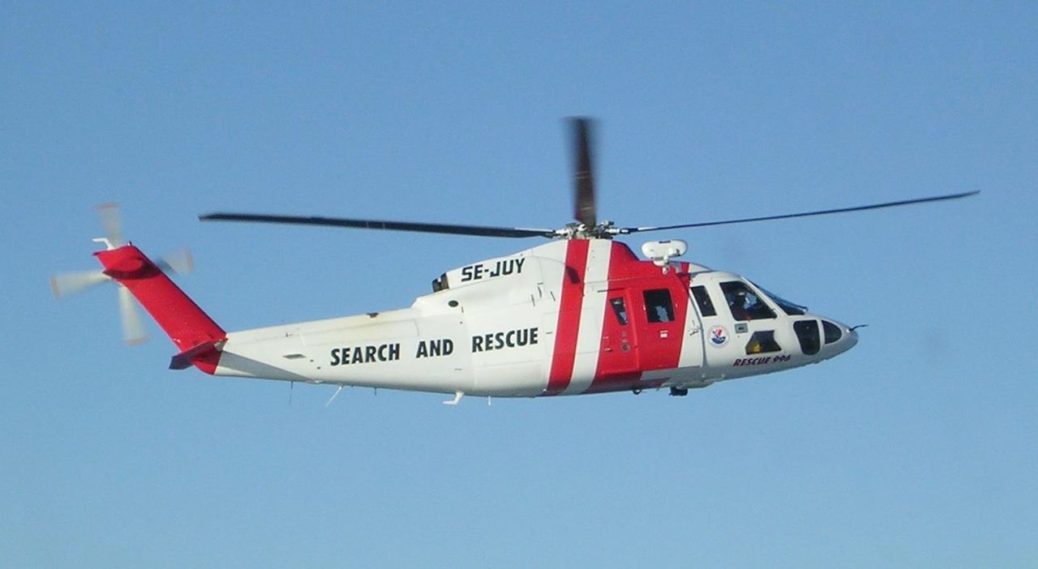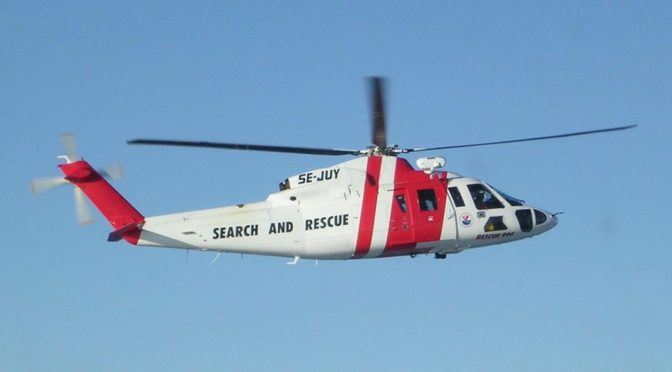
The other day, we discussed the Calabasas helicopter crash that killed Kobe and Gianna Bryant, John, Keri, and Alyssa Altobelli, Sarah and Payton Chester, Christina Mauser, and pilot Ara Zobayan. Zobayan on January 26th, 2020. Zobaya flew a 1991 Sikorsky S-76B helicopter. Specifically, we looked at the intersection of expertise and experience, and drew analogies between the three principles behind safe road use (individual behavior, vehicular safety, and societal infrastructure) and their manifestations in aviation safety.
Today, I want to continue that discussion and application of best practices in one field to another, retaining the underlying belief that at a core level, these principles may be applied to reduce risk in nearly any potentially dangerous environment. This is part of an ongoing series. With these tenets in mind, let’s take a look at the comment section of this article on the crash from the Daily Mail. There’s often a lot of questionable content there, but at times, I’ve come across thoughts as insightful as anywhere else on the Internet.
To what degree could money have bought safety in the Calabasas crash?
The top comment on the article is as follows:
If I’m worth 800 million I’m buying all the safety options for my chopper and paying for a 2nd pilot.
It’s hard to argue with “TheTruth9922”, particularly in light of how the flight turned out. But more broadly, there is much to learn from his comment. First of all, the wealth estimate he posited for Kobe Bryant appears to be roughly accurate; figures floated at the time of his death ranged from 500-770 million. Let’s use Forbe’s estimate of $600 million.
For reference, a Sikorsky S-76 cost approximately $13 million in 2014. Since we’re in 2020, let’s add a million to that and presume one would cost $14 million today. Let’s also add $35,000 to that for a Terrain Awareness and Warning System, or TAWS, per FAA estimates. That figure is small enough to be a rounding error; if a helicopter cost $1,400, it would be the equivalent of an extra $3.50, or an amount small enough to be unnoticeable. So we’re not even going to include it in future calculations. Just know that it’s there.
What about flight recorders, or “black boxes”?
The helicopter also lacked a flight data recorder and a cockpit voice recorder, both of which are known in common parlance as black boxes. Neither will save you in a crash, but both will help people figure out what was going on in the last minutes of your flight if you don’t make it home. A flight recorder can cost up to $15,000, and you want two of them. Incidentally, N72EX, the 1991 Sikorsky S-76B on the ill-fated flight, was originally fitted with both flight recorders when used as a governmental helicopter in Illinois. However, when Island Express bought it from Illinois in March 2016, they removed both. But let’s say we installed them. Add $30,000 to the $14 million. It’s still irrelevant.
How do you keep it from smashing into the ground?
So we’ve got a brand new S-76 with TAWS and flight recorders. TAWS, by the way, is a terrain awareness system. They’re required on all commercial flights in the US and present in 95% of airlines around the globe. Much like flight recorders, TAWS aren’t required on helicopters in the United States. This is still the case despite the fact that the National Transportation Safety Board recommended in 2004 after an S-76A crash involving a controlled flight into terrain (i.e., a situation where the pilots erroneously flew the helicopter into the sea) that they be outfitted in all helicopters meant to seat at least 6 passengers. The FAA ignored the recommendation, although they eventually mandated TAWS systems on air ambulances in 2014, ten years later. The point of such systems is to alert pilots of an imminent risk of flying directly into the ground or sea. We want that.
You can buy helicopter safety, but you can also buy pilot safety through redundancy
At this point, we’ve got a good helicopter with modern safety features. All that’s left is the pilot. But we’re safety oriented, so we don’t just charter one; we hire one–full time. We want someone who isn’t thinking of working somewhere else while working with us, and who knows our specific helicopter like the back of his or her hand. And we don’t just want one, because we want to reduce risks related to health issues in pilots. We also want pilots to be able to get second opinions and have help in complex situations, such as when relying on instruments to aviate, navigate, and communicate in dense flog. So we’ve got two pilots. If they’re full time pilots, we want to pay them enough to ensure they stay well trained and well rested and aren’t moonlighting as Uber pilots or drivers on the weekends or after their shifts end. Per the BLS, in May 2018, a commercial pilot had a median annual wage of around $82,000. Budgeting for two of them, then, brings the salary expenditures to $164,000 a year. Let’s round that up to $200,000. We want happy pilots.
What about maintenance and insurance? Wouldn’t that add up too?
Great point. While values will vary, let’s use the figures from a discussion on a helicopter forum. Including insurance, inspections, fuel, oil (they need oil changes just like cars do), hangar rental, and other random bits of maintenance, $20,000 a year looked like a safe estimate in 2010 for a private helicopter. However, it’s 2020, so let’s make that $22,000 a year. In fact, we’re not going to cheap out on insurance, especially since we may be transporting other people, so let’s just bump the figure up to $30,000 a year to make sure we’re not skipping steps on maintenance or on insurance coverage.
But wait. A different site–one specifically targeting aircraft maintenance costs–with additional information on the S-76B charts maintenance as much more–to the tune of more than $900,000 a year. So to be on the safe side, let’s use a round figure of $1 million for maintenance, fuel, and insurance. It’s a lot, but it’s apparently the price of safety.
How much would it have cost in total to have a safe pilot and safe helicopter setup?
In total, we’re looking at an out the door cost of $14 million for the helicopter and rolling costs of $1.2 million a year for pilot pay and maintenance.
Now let’s look again at Kobe’s net worth.
At $600 million, the helicopter would have immediately sliced off 2.3% of his net worth; the equivalent of buying a $230 limousine (with modern safety features, remember) through $10,000 in savings. In other words, it would have been irrelevant. To extend the analogy, the rolling costs of $1.2 million at his pay grade would have been the equivalent of our $10,000 high roller dropping an additional $20 each year on a pair of full time drivers, annual maintenance, and a private garage.
This has become too ridiculous to type. Which makes it all the sadder.
The dangers of being penny-wise and pound foolish
None of these prices had any meaning whatsoever at his income level. He could have had two trained, full-time pilots, a brand new helicopter (which itself would have been unnecessary, as a maintained helicopter can be used for decades, just as a maintained airplane) with modern safety features, and all maintenance-related expenses cared for without thinking twice.
Two full time pilots might have had the judgment to stay on the ground that day. Had they flown, the additional set of eyes, ears, and brains might have led to safer decisions–including that to turn around or switch to instrument-based flight. Two full time pilots who intimately knew their helicopter and had any and all safety features they could ever have asked for might have been able to avoid crashing into the ground with what appears to have been a complete loss of control and orientation of the helicopter that day.
Sometimes, safety is worth paying for. When driving, that doesn’t mean buying the latest vehicles. It does mean following best practices as a driver (which might mean spending money on high-weight car seats or winter tires if you see snow each year). It does mean using vehicles with, at a minimum, ESC and side impact airbags (and not simply buying the cheapest vehicles possible for your adolescent or college-aged drivers). It does mean choosing safe infrastructure whenever possible (even if that means spending a bit more on gas to find safer roads).
Part 3 in this series is here.
 If you find my information on best practices in car and car seat safety helpful, you can buy my books here or do your shopping through this Amazon link. Canadians can shop here for Canadian purchases. It costs nothing extra to do so, but when you shop through my links, a small portion of your purchase, regardless of what you buy, will go toward the maintenance of The Car Crash Detective.
If you find my information on best practices in car and car seat safety helpful, you can buy my books here or do your shopping through this Amazon link. Canadians can shop here for Canadian purchases. It costs nothing extra to do so, but when you shop through my links, a small portion of your purchase, regardless of what you buy, will go toward the maintenance of The Car Crash Detective.

